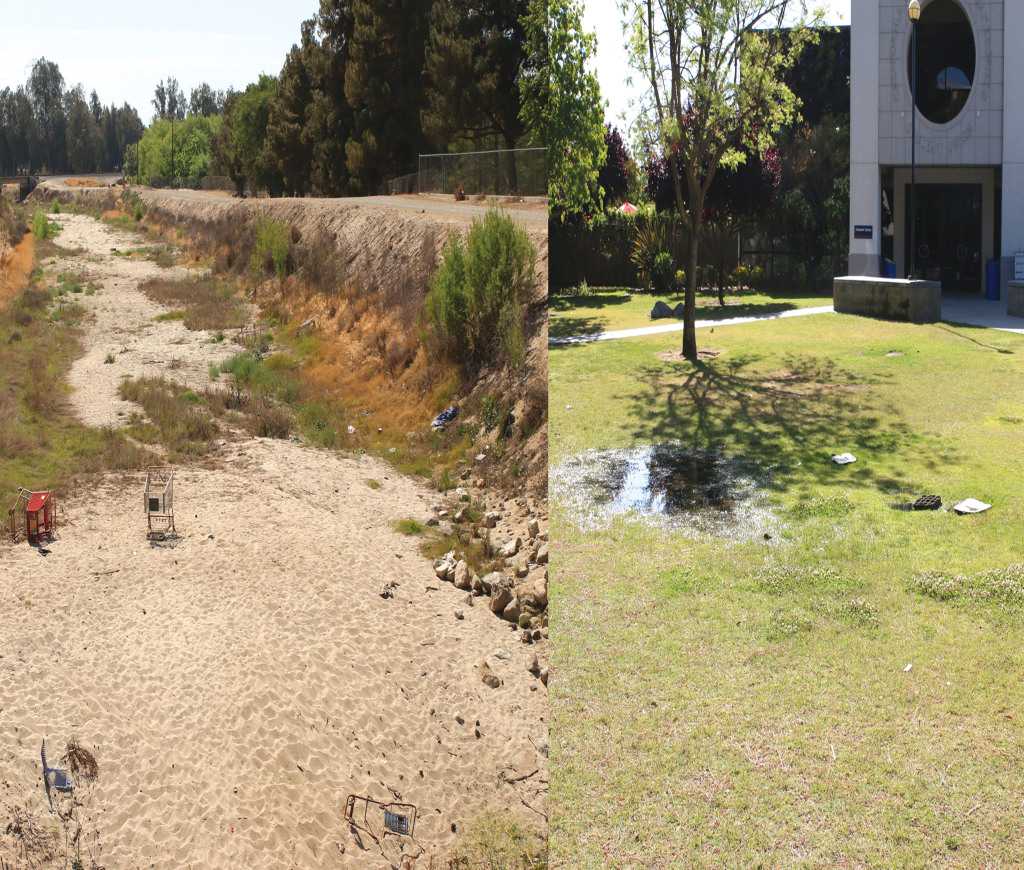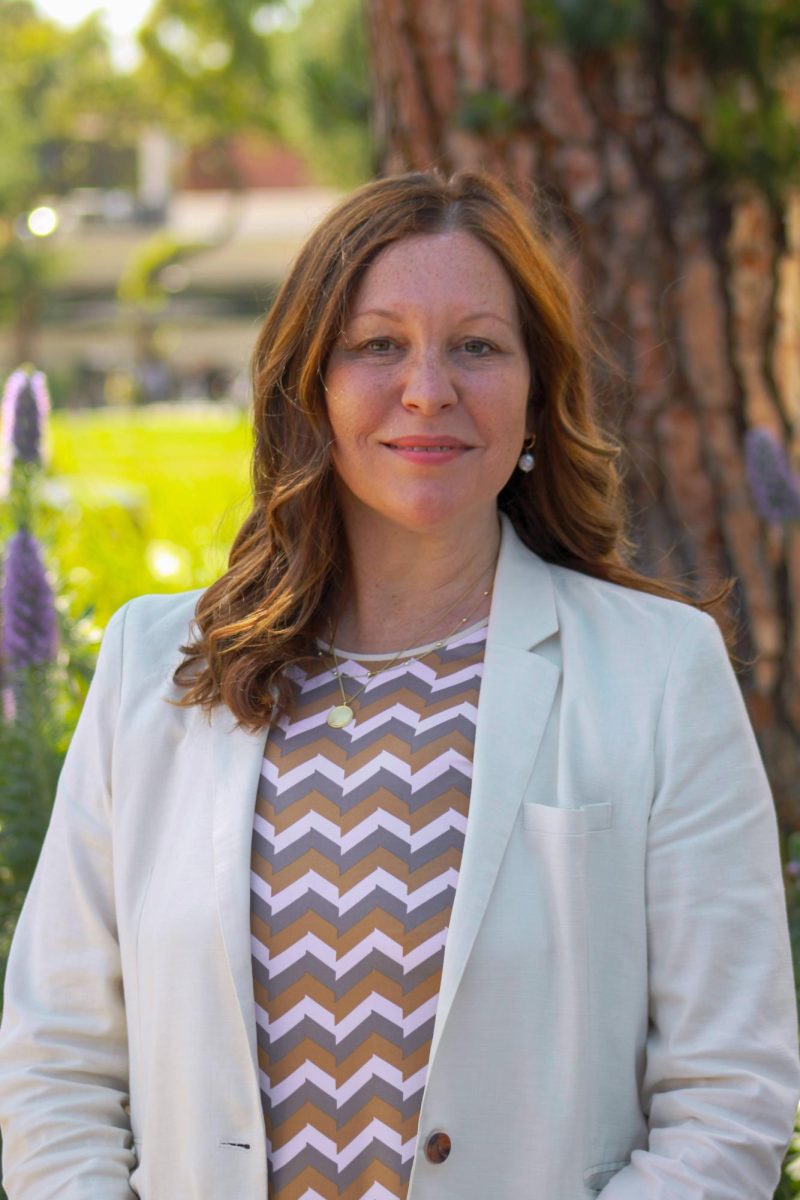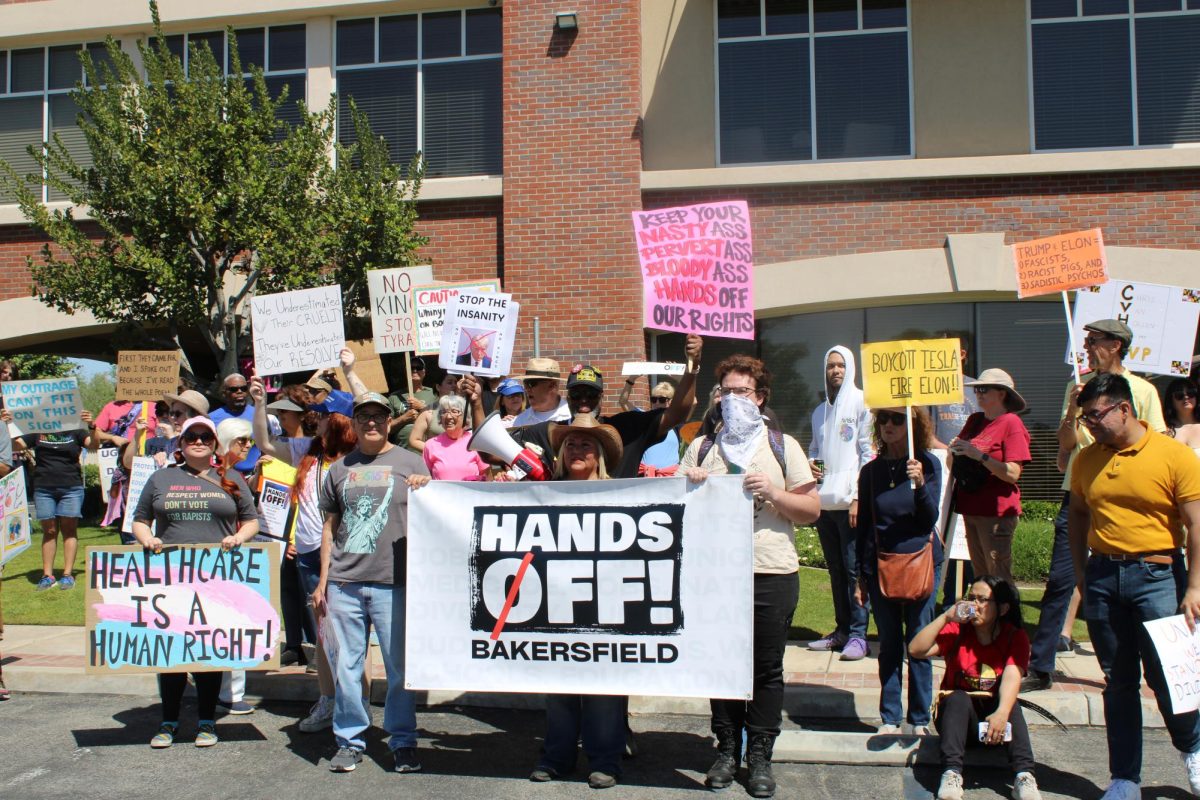News Editor
In response to California’s worsening drought and concerns surrounding perceptions of excessive water consumption, CSU Bakersfield has pledged to reduce its water use by 25 percent this calendar year.
The decision is in accordance with a state executive order issued and authorized on April 1 by Gov. Jerry Brown, which requires urban water usage to be reduced by that same amount.

Right: Meanwhile, in front of the Student Union, a large puddle soaks into the grassy terrain. CSUB plans to reduce water usage on campus by 25 percent this year.
Associate Vice President for Facilities Management Patrick Jacobs said the university has developed and begun work on solutions to reach the 25 percent required reduction. Since irrigation accounts for approximately 80 percent of CSUB’s water consumption, Jacobs said the university will reduce irrigation for lawns and replace unused and difficult-to-maintain turf fields with low water-use vegetation.
“I tried to identify areas where people don’t currently use the grass,” Jacobs said. “In other words, it’s green, it’s grass, but it’s not areas where students either play or have activities. I tried to find areas where there was grass, but it wasn’t really traversed a lot.”
In particular, Jacobs said the university is planning to construct four demonstration zones on campus. Demonstration zones refer to spaces in which turf and grass lawns are removed and replaced with low-use plants and plant materials.
The four areas chosen to become demonstration zones include the east-, west-, and south-facing sloped areas in front of the Walter Stiern Library, a strip of land south of Science III, the lawn in front of Peet’s Coffee between Science I and Dorothy Donohue Hall and, if funding permits, the hilly area immediately adjacent to the Cashier’s Office.
Jacobs said these areas were chosen due to their central locations on campus.
“I wanted these areas to be in areas where people go so that people would observe these,” Jacobs said. “I want them in the center of campus so that people can see them and they could also become cognizant of what this non-grass landscape would look like, so it would encourage people on their own, in their own houses, to do stuff like this.
The construction of the demonstration zones is being funded by a $243,000 request made by CSUB and approved by the Chancellor’s Office. Construction is expected to begin during fall quarter, after the grasses in the listed areas are allowed to die during the summer.
Currently, Jacobs added the university has also started removing turf areas on campus that have been difficult to maintain.
“We’ve undertaken a program where, in five areas, we’ve either taken out grass and replaced it with less water using vegetation or taken out grass and completely eliminated water use,” Jacobs said.
The five areas where turf has been removed include the northeast strip of turf in Parking Lot H, the northwest strip in Parking Lot I, a rectangle of grass near the Facilities Building, a plot on the east side of Parking Lot G and the small zones of land surrounding parking permit machines. In each of the locations, grass has either been replaced with mulch, water-reducing plant material or hardscapes.
According to a memo provided by Facilities Management, these changes are expected to result in an approximate savings of 1,407,993 gallons of water.
While a number of students expressed displeasure with how many years it has taken CSUB to respond to the statewide drought, they approved of the university’s actions.
“The one thing I was very embarrassed about when I first came here was how over drenched these fields were, and that was two years ago,” said Paul Georgi, a senior psychology major. “I think this is long overdue, but I think that, if the university is serious about this, it’s showing that we can be part of a system that is progressive and more socially conscious. I think it’s awesome.”
Jayme Reyna, a sophomore biology major, agrees with Georgi.
“For the university to finally do something – granted, the government is telling us to do something about water use – but for us to finally do something about the drought is really good,” Reyna said.
Other water directives
This latest reduction mandate is the second of its kind for the university, which had agreed in February 2014 to reduce its water usage by 20 percent by 2020, an announcement necessitated by a CSU mandate issued by the Chancellors Office urging schools to reduce their water consumption.
Severity of the drought
While January is historically California’s wettest month, this January was the driest one in California record, a record that has existed since 1895.
Snow packs have been similarly low. According to the California Department of Water Resources, California has received only 5 percent of its average annual snowfall.
This year’s executive order follows a state of emergency issued by Gov. Brown in January of last year.






